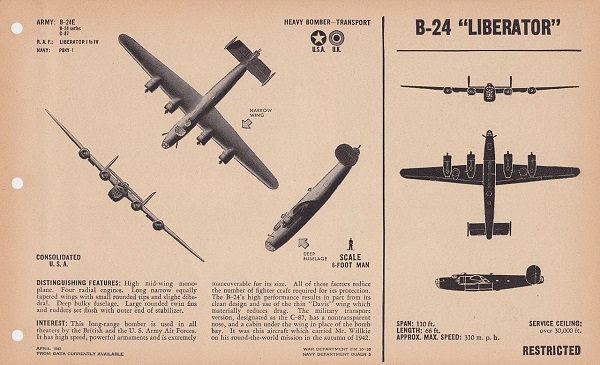
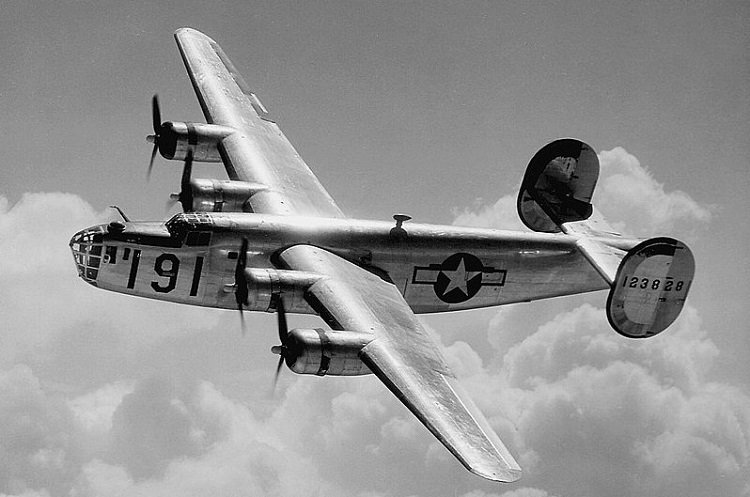
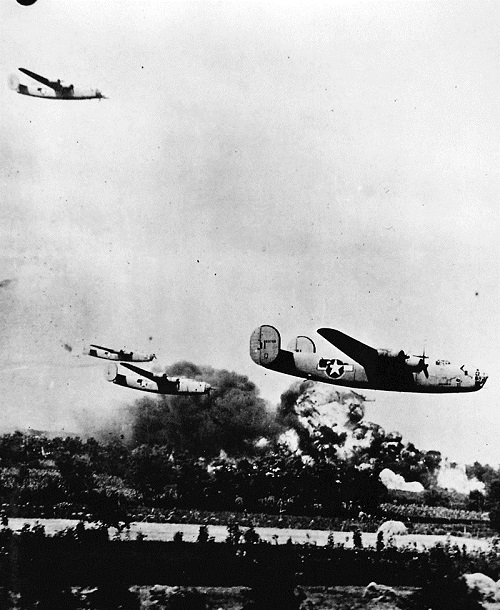
At its inception, the B-24 was a modern design featuring a highly efficient shoulder-mounted, high aspect ratio Davis wing. The wing gave the Liberator a high cruise speed, long range and the ability to carry a heavy bomb load. Early RAF Liberators were the first aircraft to cross the Atlantic Ocean as a matter of routine. In comparison with its contemporaries, the B-24 was relatively difficult to fly and had poor low speed performance; it also had a lower ceiling and was less robust than the Boeing B-17 Flying Fortress. While aircrews tended to prefer the B-17, General Staff favored the B-24 and procured it in huge numbers for a wide variety of roles.[4][5] At approximately 18,500 units – including over 4,600 manufactured by Ford Motor Company – it holds records as the world's most produced bomber, heavy bomber, multi-engine aircraft, and American military aircraft in history.
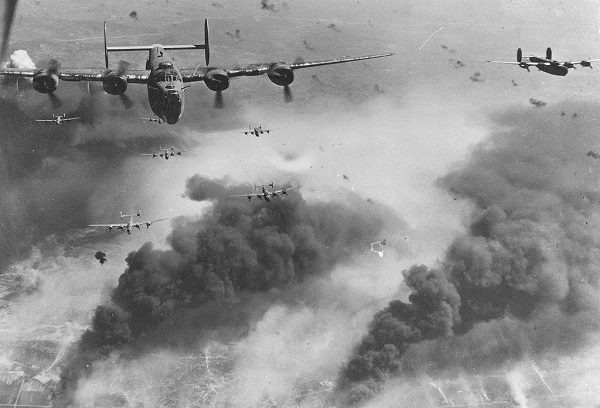
The B-24 was used extensively in World War II. It served in every branch of the American armed forces as well as several Allied air forces and navies. It saw use in every theater of operations. Along with the B-17, the B-24 was the mainstay of the U.S. strategic bombing campaign in the Western European theater. Due to its range, it proved useful in bombing operations in the Pacific, including the bombing of Japan. Long range anti-submarine Liberators played an instrumental role in closing the Mid-Atlantic gap in the Battle of the Atlantic. The C-87 transport derivative served as a longer range, higher capacity counterpart to the Douglas C-47 Skytrain.
By the end of World War II, the technological breakthroughs of the Boeing B-29 Superfortress and other modern types had surpassed the bombers that served from the start of the war. The B-24 was rapidly phased out of U.S. service, although the PB4Y-2 Privateer maritime patrol derivative carried on in service with the U.S. Navy in the Korean War.
Read more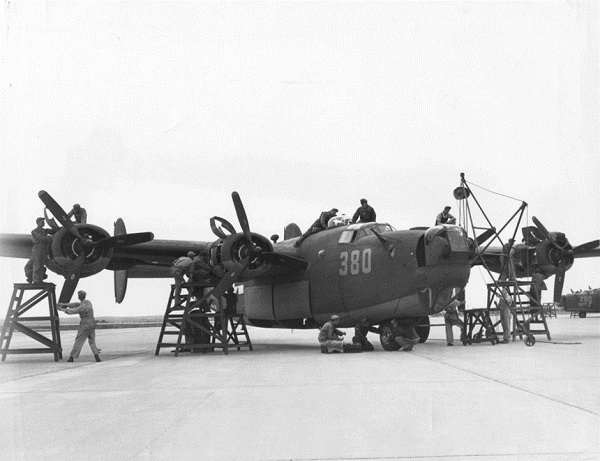
Crew: 11 (pilot, co-pilot, navigator, bombardier, radio operator, nose turret, top turret, 2 waist gunners, ball turret, tail gunner)
Length: 67 ft 2 in (20.47 m)
Wingspan: 110 ft (34 m)
Height: 17 ft 7.5 in (5.372 m)
Wing area: 1,048 sq ft (97.4 m2)
Aspect ratio: 11.55
Zero-lift drag coefficient: CD0.0406
Frontal area: 42.54 sq ft (3.952 m2)
Airfoil: root: Davis (22%); tip: Davis (9.3%)[59]
Empty weight: 36,500 lb (16,556 kg)
Gross weight: 55,000 lb (24,948 kg)
Max takeoff weight: 65,000 lb (29,484 kg) plus
Fuel capacity: 2,344 US gal (1,952 imp gal; 8,870 l) normal capacity ; 3,614 US gal (3,009 imp gal; 13,680 l) with long-range tanks in the bomb bay ; Oil capacity 131.6 US gal (109.6 imp gal; 498 l) in four self-sealing nacelle hopper tanks
Powerplant: 4 × Pratt & Whitney R-1830-35 Twin Wasp, R-1830-41 or R-1830-65 14-cylinder two-row air-cooled turbosupercharged radial piston engines, 1,200 hp (890 kW) each
Propellers: 3-bladed Hamilton Standard, 11 ft 7 in (3.53 m) diameter constant-speed fully-feathering propellers
Maximum speed: 297 mph (478 km/h; 258 kn) at 25,000 ft (7,600 m)
Cruise speed: 215 mph (346 km/h; 187 kn)
Stall speed: 95 mph (153 km/h; 83 kn)
Range: 1,540 mi (1,338 nmi; 2,478 km) at 237 mph (206 kn; 381 km/h) and 25,000 ft (7,600 m) with normal fuel and maximum internal bomb load
Ferry range: 3,700 mi (3,215 nmi; 5,955 km)
Service ceiling: 28,000 ft (8,500 m)
Rate of climb: 1,025 ft/min (5.21 m/s)
Time to altitude: 20,000 ft (6,100 m) in 25 minutes
Lift-to-drag: 12.9
Wing loading: 52.5 lb/sq ft (256 kg/m2)
Power/mass: 0.0873 hp/lb (0.1435 kW/kg)
Guns: 10 × .50 caliber (12.7 mm) M2 Browning machine guns in 4 turrets and two waist positions
Bombs: ** Short range (˜400 mi [640 km]): 8,000 pounds (3,600 kg)
Long range (˜800 mi [1,300 km]): 5,000 pounds (2,300 kg)
Very long range (˜1,200 mi [1,900 km]): 2,700 pounds (1,200 kg)
